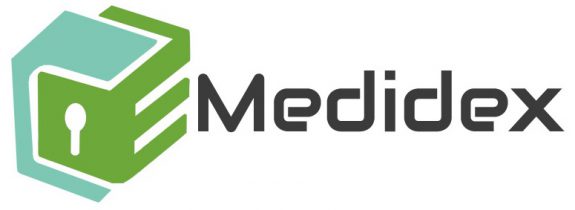Disclaimer:
Medidex is not a provider of medical services and all information is provided for the convenience of the user. No medical decisions should be made based on the information provided on this website without first consulting a licensed healthcare provider.This website is intended for persons 18 years or older. No person under 18 should consult this website without the permission of a parent or guardian.
NebuPent
Overview
What is NebuPent?
NebuPent (pentamidine isethionate), an antifungal agent, is a nonpyrogenic lyophilized product. After reconstitution with Sterile Water for Injection, USP, NebuPent is administered by inhalation via the Respirgard II nebulizer [Marquest, Englewood, CO] (see ).
Pentamidine isethionate, 4,4’-[1,5-pentane-diylbis(oxy)]bis-benzenecarboximidamid, is a white crystalline powder soluble in water and glycerin and insoluble in ether, acetone, and chloroform.
CHNO•2CHOS 592.68
Each vial contains 300 mg pentamidine isethionate.
What does NebuPent look like?



What are the available doses of NebuPent?
Sorry No records found.
What should I talk to my health care provider before I take NebuPent?
Sorry No records found
How should I use NebuPent?
NebuPent is indicated for the prevention of pneumonia (PJP) in high-risk, HIV-infected patients defined by one or both of the following criteria:
i. a history of one or more episodes of PJP
ii. a peripheral CD4+ (T4 helper/inducer) lymphocyte count less than or equal to 200/mm.
These indications are based on the results of an 18-month randomized, dose-response trial in high risk HIV-infected patients and on existing epidemiological data from natural history studies.
The patient population of the controlled trial consisted of 408 patients, 237 of whom had a history of one or more episodes of PJP. The remaining patients without a history of PJP included 55 patients with Kaposi’s sarcoma and 116 patients with other AIDS diagnoses, ARC or asymptomatic HIV infection. Patients were randomly assigned to receive NebuPent via the Respirgard II nebulizer at one of the following three doses: 30 mg every two weeks (n=135), 150 mg every two weeks (n=134) or 300 mg every four weeks (n=139). The results of the trial demonstrated a significant protective effect (p<0.01) against PJP with the 300 mg every four week dosage regimen compared to the 30 mg every two week dosage regimen. The 300 mg dose regimen reduced the risk of developing PJP by 50 to 70% compared to the 30 mg regimen. A total of 293 patients (72% of all patients) also received zidovudine at sometime during the trial. The analysis of the data demonstrated the efficacy of the 300 mg dose even after adjusting for the effect of zidovudine.
The results of the trial further demonstrate that the dose and frequency of dosing are important to the efficacy of NebuPent prophylaxis in that multiple analyses consistently demonstrated a trend toward greater efficacy with 300 mg every four weeks as compared to 150 mg every two weeks.
No dose-response was observed for reduction in overall mortality; however, mortality from PJP was low in all three dosage groups.
IMPORTANT: NEBUPENT MUST BE DISSOLVED ONLY IN STERILE WATER FOR INJECTION, USP. DO NOT USE SALINE SOLUTION FOR RECONSTITUTION BECAUSE THE DRUG WILL PRECIPITATE. DO NOT MIX THE NEBUPENT SOLUTION WITH ANY OTHER DRUGS. DO NOT USE THE RESPIRGARD
II NEBULIZER TO ADMINISTER A BRONCHODILATOR.
®
What interacts with NebuPent?
Sorry No Records found
What are the warnings of NebuPent?
Sorry No Records found
What are the precautions of NebuPent?
Sorry No Records found
What are the side effects of NebuPent?
Sorry No records found
What should I look out for while using NebuPent?
NebuPent is contraindicated in patients with a history of an anaphylactic reaction to inhaled or parenteral pentamidine isethionate.
The potential for development of acute PJP still exists in patients receiving NebuPent prophylaxis. Therefore, any patient with symptoms suggestive of the presence of a pulmonary infection, including but not limited to dyspnea, fever or cough, should receive a thorough medical evaluation and appropriate diagnostic tests for possible acute PJP as well as for other opportunistic and nonopportunistic pathogens. The use of NebuPent may alter the clinical and radiographic features of PJP and could result in an atypical presentation, including but not limited to mild disease or focal infection.
Prior to initiating NebuPent prophylaxis, symptomatic patients should be evaluated appropriately to exclude the presence of PJP. The recommended dose of NebuPent for the prevention of PJP is insufficient to treat acute PJP.
What might happen if I take too much NebuPent?
Overdosage has not been reported with NebuPent. The symptoms and signs of overdosage are not known.
A serious overdosage, to the point of producing systemic drug levels similar to those following parenteral administration, would have the potential of producing similar types of serious systemic toxicity. (See ).
Available clinical pharmacology data (see ) suggest that a dose up to 40 times the recommended NebuPent dosage would be required to produce systemic levels similar to a single 4 mg/kg intravenous dose.
How should I store and handle NebuPent?
Store at 20° to 25°C (68° to 77°F) [See USP Controlled Room Temperature].Dispense in a tight container as defined in the USP, with a child-resistant closure (as required).KEEP THIS AND ALL MEDICATIONS OUT OF THE REACH OF CHILDREN.Store at 20° to 25°C (68° to 77°F) [See USP Controlled Room Temperature].Dispense in a tight container as defined in the USP, with a child-resistant closure (as required).KEEP THIS AND ALL MEDICATIONS OUT OF THE REACH OF CHILDREN.Store at 20° to 25°C (68° to 77°F) [See USP Controlled Room Temperature].Dispense in a tight container as defined in the USP, with a child-resistant closure (as required).KEEP THIS AND ALL MEDICATIONS OUT OF THE REACH OF CHILDREN.Store dry product at 20° to 25°C (68° to 77°F) [see USP Controlled Room Temperature].Protect the dry product and the reconstituted solution from light.Store dry product at 20° to 25°C (68° to 77°F) [see USP Controlled Room Temperature].Protect the dry product and the reconstituted solution from light.
Clinical Information
Chemical Structure
No Image foundClinical Pharmacology
Non-Clinical Toxicology
NebuPent is contraindicated in patients with a history of an anaphylactic reaction to inhaled or parenteral pentamidine isethionate.The potential for development of acute PJP still exists in patients receiving NebuPent prophylaxis. Therefore, any patient with symptoms suggestive of the presence of a pulmonary infection, including but not limited to dyspnea, fever or cough, should receive a thorough medical evaluation and appropriate diagnostic tests for possible acute PJP as well as for other opportunistic and nonopportunistic pathogens. The use of NebuPent may alter the clinical and radiographic features of PJP and could result in an atypical presentation, including but not limited to mild disease or focal infection.
Prior to initiating NebuPent prophylaxis, symptomatic patients should be evaluated appropriately to exclude the presence of PJP. The recommended dose of NebuPent for the prevention of PJP is insufficient to treat acute PJP.
Use with Opioids
Use with Other CNS Depressants
Use with Imipramine and Desipramine
Drugs that inhibit alprazolam metabolism via cytochrome P450 3A
Drugs demonstrated to be CYP3A inhibitors of possible clinical significance on the basis of clinical studies involving alprazolam (caution is recommended during coadministration with alprazolam)
Fluoxetine—Coadministration of fluoxetine with alprazolam increased the maximum plasma concentration of alprazolam by 46%, decreased clearance by 21%, increased half-life by 17%, and decreased measured psychomotor performance.
Propoxyphene—Coadministration of propoxyphene decreased the maximum plasma concentration of alprazolam by 6%, decreased clearance by 38%, and increased half-life by 58%.
Oral Contraceptives—Coadministration of oral contraceptives increased the maximum plasma concentration of alprazolam by 18%, decreased clearance by 22%, and increased half-life by 29%.
Drugs and other substances demonstrated to be CYP3A inhibitors on the basis of clinical studies involving benzodiazepines metabolized similarly to alprazolam or on the basis of studies with alprazolam or other benzodiazepines (caution is recommended during coadministration with alprazolam)
Available data from clinical studies of benzodiazepines other than alprazolam suggest a possible drug interaction with alprazolam for the following: diltiazem, isoniazid, macrolide antibiotics such as erythromycin and clarithromycin, and grapefruit juice. Data from studies of alprazolam suggest a possible drug interaction with alprazolam for the following: sertraline and paroxetine. However, data from an drug interaction study involving a single dose of alprazolam 1 mg and steady state dose of sertraline (50 to 150 mg/day) did not reveal any clinically significant changes in the pharmacokinetics of alprazolam. Data from studies of benzodiazepines other than alprazolam suggest a possible drug interaction for the following: ergotamine, cyclosporine, amiodarone, nicardipine, and nifedipine. Caution is recommended during the coadministration of any of these with alprazolam (see ).
Drugs demonstrated to be inducers of CYP3A
IMPORTANT: DO NOT MIX THE NEBUPENT SOLUTION WITH ANY OTHER DRUGS. DO NOT USE THE RESPIRGARD
II NEBULIZER TO ADMINISTER A BRONCHODILATOR.
®
The most frequently reported unsolicited adverse events (1 to 5%) in clinical trials, regardless of their relation to NebuPent therapy were as follows (n=931):
Night sweats.
Diarrhea and nausea.
Anemia.
Bronchitis, non-specific herpes, herpes zoster, non-specific influenza, oral Candida, pharyngitis, sinusitis, and upper respiratory tract.
Headache.
Chest pain, cough, and wheezing.
Bad taste.
Adverse events of less than 1% incidence were as follows (No causal relationship to treatment has been established for these adverse events):
Allergic reaction, non-specific allergy, body odor, facial edema, fever, leg edema, lethargy, low body temperature, and temperature abnormality.
Cerebrovascular accident, hypotension, hypertension, palpitations, poor circulation, syncope, tachycardia, vasodilatation and vasculitis.
Abdominal cramps, abdominal pain, constipation, dry mouth, dyspepsia, gastritis, gastric ulcer, gingivitis, hiatal hernia, hypersalivation, oral ulcer/abscess, splenomegaly, and vomiting.
Eosinophilia, neutropenia, non-specific cytopenia, pancytopenia, and thrombocytopenia.
Hepatitis, hepatomegaly, and hepatic dysfunction.
Bacterial pneumonia, central venous line related sepsis, cryptococcal meningitis, cytomegalovirus (CMV) colitis, CMV retinitis, esophageal Candida, histoplasmosis, Kaposi’s sarcoma, non-specific mycoplasma, oral herpes, non-specific otitis, non-specific pharyngitis, pharyngeal herpes, non-specific serious infection, tonsillitis, tuberculosis, and viral encephalitis.
Hyperglycemia, hypoglycemia, and hypocalcemia.
Arthralgia, gout, and myalgia.
Anxiety, confusion, depression, drowsiness, emotional lability, hallucination, hypesthesia, insomnia, memory loss, neuralgia, neuropathy, non-specific neuropathy, nervousness, paranoia, paresthesia, peripheral neuropathy, seizure, tremors, unsteady gait, and vertigo.
Miscarriage.
Asthma, bronchitis, bronchospasm, chest congestion, chest tightness, coryza, cyanosis, eosinophilic or interstitial pneumonitis, gagging, hemoptysis, hyperventilation, laryngitis, laryngospasm, non-specific lung disorder, nasal congestion, pleuritis, pneumothorax, rales, rhinitis, shortness of breath, non-specific sputum, and tachypnea.
Desquamation, dry and breaking hair, dry skin, erythema, non-specific dermatitis, pruritus, rash, and urticaria.
Blepharitis, blurred vision, conjunctivitis, contact lens discomfort, eye pain or discomfort, hemianopsia, loss of taste, non-specific odor, and smell.
Flank pain, incontinence, nephritis, renal failure, and renal pain.
In a clinical trial where some adverse events were solicited by investigators, the incidences were as follows:
Cough (62.7%)
Decreased appetite (50.0%)
Dizziness or light-headedness (45.1%)
Fatigue (65.7%)
Fever (51.0%)
Non-specific serious infection (15.2%)
Shortness of breath (48.3%)
Wheezing (32.4%)
From post-marketing clinical experience with NebuPent the following spontaneous adverse events have been reported: anaphylaxis, colitis, diabetes, dyspnea, esophagitis, hematochezia, increased blood urea nitrogen (BUN) and serum creatinine levels, melena, pancreatitis (see ), syndrome of inappropriate antidiuretic hormone (SIADH), and torsade de pointes.
Reference
This information is obtained from the National Institute of Health's Standard Packaging Label drug database.
"https://dailymed.nlm.nih.gov/dailymed/"
While we update our database periodically, we cannot guarantee it is always updated to the latest version.
Review
Professional
Clonazepam Description Each single-scored tablet, for oral administration, contains 0.5 mg, 1 mg, or 2 mg Clonazepam, USP, a benzodiazepine. Each tablet also contains corn starch, lactose monohydrate, magnesium stearate, microcrystalline cellulose, and povidone. Clonazepam tablets USP 0.5 mg contain Yellow D&C No. 10 Aluminum Lake. Clonazepam tablets USP 1 mg contain Yellow D&C No. 10 Aluminum Lake, as well as FD&C Blue No. 1 Aluminum Lake. Chemically, Clonazepam, USP is 5-(o-chlorophenyl)-1,3-dihydro-7-nitro-2H-1,4-benzodiazepin-2-one. It is a light yellow crystalline powder. It has the following structural formula: C15H10ClN3O3 M.W. 315.72Tips
Tips
Interactions
Interactions
A total of 440 drugs (1549 brand and generic names) are known to interact with Imbruvica (ibrutinib). 228 major drug interactions (854 brand and generic names) 210 moderate drug interactions (691 brand and generic names) 2 minor drug interactions (4 brand and generic names) Show all medications in the database that may interact with Imbruvica (ibrutinib).

